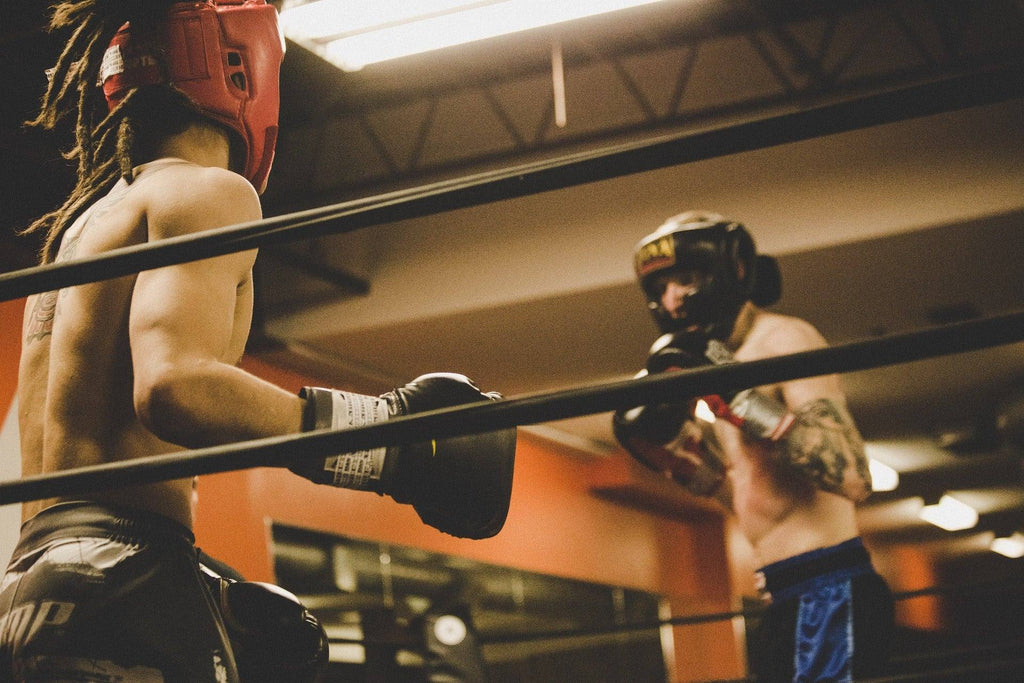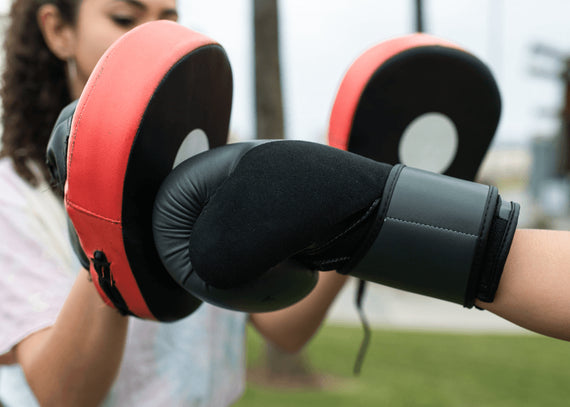Boxing has 17 weight classes, ranging from the little 105-pound dynamos to the heavyweight giants weighing in at 200 or 300 pounds. The number of weight classes has drastically increased from the initial eight (flyweight, bantamweight, featherweight, lightweight, welterweight, middleweight, junior middleweight, and heavyweight) to the current 17 (flyweight, bantamweight, featherweight, lightweight, middleweight, junior middleweight, and heavyweight).
This change was made to drop the number of mismatches between opponents of different sizes. These boxers come to the ring by getting boxing gloves and boxing pads, whose primary aim is to beat their opponents.
Amateur boxing offers 11 separate weight classes, out of 17, based on the alphabetical weight categories used in boxing. These classes have highly stringent weight criteria for competitors. Besides the lightweight and heavyweight divisions, the weight classifications used in male and female amateur boxing are virtually equivalent. Before each fight, both competitors are required to undergo a weigh-in so that it may be determined whether or not they are eligible to participate in the given weight class.
Between 105 and 115 Pounds
Boxers who compete in the smallest weight class, known depending on the boxing organization they belong to as mini flyweights or strawweights, must have a bodyweight of fewer than 105 pounds. Fighters competing in the junior flyweight division have a range of 105 to 108 pounds. Fighters competing in the flyweight class must weigh between 108 and 112 pounds, while those competing in the super flyweight class must weigh between 112 and 115 pounds. The lightest competitors in these weight divisions are often the quickest fighters overall. Boxers of a younger age participate in these classes as well.
Between 115 and 130 Pounds
Fighters who compete in the super flyweight and junior bantamweight divisions weigh between 115 and 118 pounds. Fighters competing in the super bantamweight division weigh anywhere from 118 to 122 pounds, while those competing in the featherweight division weigh anywhere from 122 to 126 pounds. Fights in the super featherweight class are contested by competitors who weigh between 126 and 130 pounds. Fights in these weight classes are often characterized by rapid successions of blows and nimble footwork.
Between 130 and 154 Pounds

Fighters competing in the lightweight division weigh anywhere from 130 to 135 pounds, while those competing in the super lightweight and light welterweight divisions weigh 135 to 140 pounds. Wrestlers that compete in the welterweight class weigh between 140 and 147 pounds. Fighters competing in the super welterweight or light middleweight divisions have a body weight of 147 to 154 pounds. Boxers that compete in these classes often possess a wide range of boxing talents, including those relating to speed and power.
Having a body weight of at least 154 Pounds
There are five different weight classes for competitors competing in the higher-weight categories. These competitors are known for having solid punches, which may lead to an increased number of bouts ending in knockouts. Middleweight competitors range in weight from 154 to 160 pounds. Fighters in the upper middleweight class weigh between 160 and 168 pounds, while light heavyweight fighters weigh between 168 and 175 pounds.
Fighters competing in the cruiserweight class range from 175 to 200 pounds. Fighters competing in the heavyweight division are required to weigh at least 200 pounds and be permitted to weigh any more than this minimum. This weight class has seen competition from some of the most famous and accomplished boxers in history, including Muhammad Ali and Mike Tyson, amongst others and they use hand wraps to increase the grip of their boxing gloves.
At the Olympics, each weight class competes in its tournament with single elimination, and the winners get one gold medal, one silver medal, and two bronze medals each. All the fights are scheduled in ascending order of weight, with the super heavyweight final being the last to take place. The event format is designed so that the finals of all the weight classes being competed in are held on the last two days of the competition. Competitors who do not win on the penultimate day of the competition are awarded the bronze medal. The winners of the finals on the final day of the competition are awarded the gold and silver medals.
Each weight class has preliminary and qualifying fights for all represented classes when the number of entries necessitates several matchups before the finals. The matchups of the lightest weight class require such fighting first and continuing with each consecutive higher weight class as necessary; additional, second, third, and fourth-round matchups may be required to complete the program using the same weight class progression to finally reach the final. In addition, there is a need to fight first and then continue in the matchups in the lightest weight class.
What are the boxing weigh-in rules?
Weigh-ins are often held the day before a bout is scheduled. The two competitors are put on the scale to determine whether or not they will exceed the agreed-upon limit, which may refer to a conventional weight category or a catchweight (explained below).
Boxers may try to lose a significant amount of weight in the days and hours before a fight, so most weight loss is due to a loss of water, which can be quickly regained before the fight the following day. This is done because an advantage can be gained from both a size and weight advantage. To come in slightly below the limit, fighters can even try to be weighed nude.
Several sanctioning organizations, including the International Boxing Federation (IBF), have laws that ban competitors from gaining more than a certain amount of weight in the hours immediately after a bout. After a couple of hours, a fighter may be given some more time to reach the weight on their second try.
What is a catchweight fight?
The Ultimate Fighting Championship (UFC) reserves the right to schedule a catchweight bout if a competitor cannot reduce their weight by the required amount. Catchweight is not a competition category; instead, it refers to the weight of the heavier competitor. Fights at catchweight come with a lot of stipulations. If a fighter fails to make weight for their bout, they will almost always be penalized a sizable amount of the proceeds from that fight.
The amount of the fine is often given to the other combatant. For instance, Kim was required to pay back thirty percent of the money she had won. If a catchweight fight is awarded the fight of the Night bonus, the fighter who did not miss weight for the bout will be awarded the bonus intended initially for their opponent.
Bottom Line
So, weight classes are perfectly divided in boxing to prevent the unfair advantage of weight. Thus, it's boxers' right to play in their weight class and face opponents of the same mass. By doing this, federations ensure that games will be played by putting techniques and strength at the top and eliminating all weight players' tournaments. With this, there won’t be any weight or size issues between two opponents taking part in a fight. To develop your techniques, you can buy boxing gloves, hand wraps, and boxing pads from Mani Sports.





